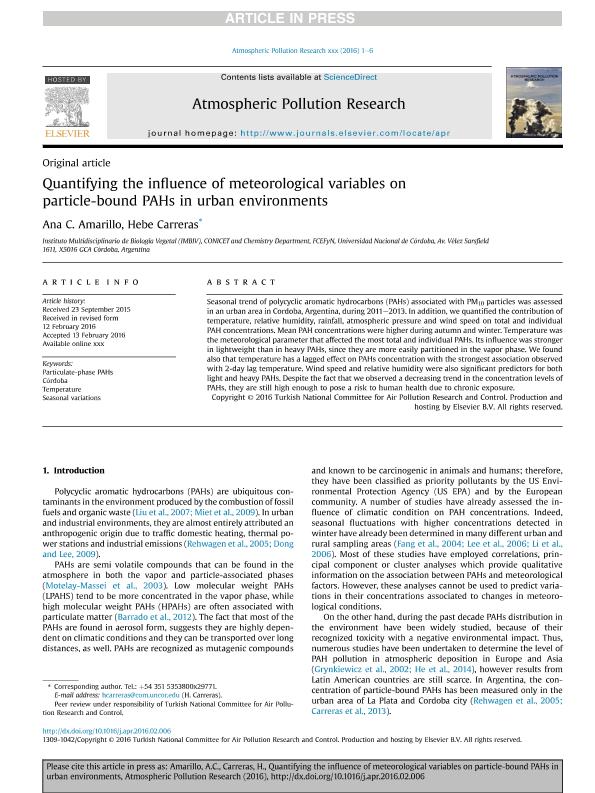Artículo
Quantifying the influence of meteorological variables on particle-bound PAHs in urban environments
Fecha de publicación:
02/2016
Editorial:
Elsevier
Revista:
Atmospheric Pollution Research
e-ISSN:
1309-1042
Idioma:
Inglés
Tipo de recurso:
Artículo publicado
Clasificación temática:
Resumen
Seasonal trend of polycyclic aromatic hydrocarbons (PAHs) associated with PM10 particles was assessed in an urban area in Cordoba, Argentina, during 2011-2013. In addition, we quantified the contribution of temperature, relative humidity, rainfall, atmospheric pressure and wind speed on total and individual PAH concentrations. Mean PAH concentrations were higher during autumn and winter. Temperature was the meteorological parameter that affected the most total and individual PAHs. Its influence was stronger in lightweight than in heavy PAHs, since they are more easily partitioned in the vapor phase. We found also that temperature has a lagged effect on PAHs concentration with the strongest association observed with 2-day lag temperature. Wind speed and relative humidity were also significant predictors for both light and heavy PAHs. Despite the fact that we observed a decreasing trend in the concentration levels of PAHs, they are still high enough to pose a risk to human health due to chronic exposure.
Palabras clave:
Particulate Phase Pahs
,
Cordoba
,
Temperature
,
Seasonal Variations
Archivos asociados
Licencia
Identificadores
Colecciones
Articulos(IMBIV)
Articulos de INST.MULTIDISCIPL.DE BIOLOGIA VEGETAL (P)
Articulos de INST.MULTIDISCIPL.DE BIOLOGIA VEGETAL (P)
Citación
Amarillo, Ana Carolina; Carreras, Hebe Alejandra; Quantifying the influence of meteorological variables on particle-bound PAHs in urban environments; Elsevier; Atmospheric Pollution Research; 7; 4; 2-2016; 597–602
Compartir
Altmétricas




